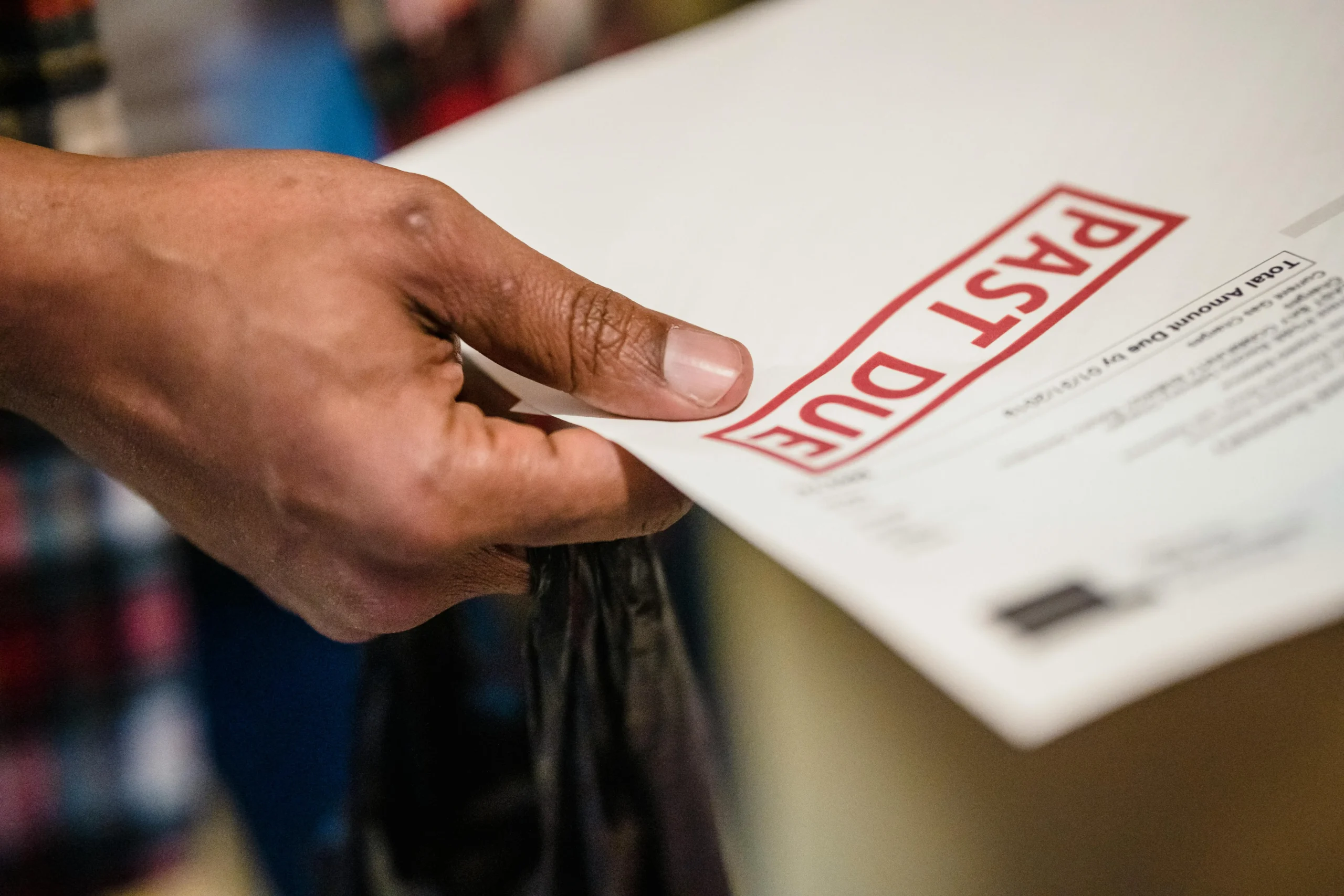Getting paid late, or not at all, can seriously impact your business operations. Not only that, but it’s distressing on several levels. While there are many potential reasons for a late payment, it does nothing for your cash flow or stress levels.
Far too many businesses don’t have a clear view of the Fair Debt Collection Practices Act, or really understand the best ways to move forward. But don’t worry; knowledge is power. In this guide we’re going to give you all the information you need to handle these troublesome situations with a greater degree of ease. You might be surprised to learn that it’s actually about implementing systems ahead of time, rather than reacting to specific situations.
Let’s jump in and learn more about how to collect payment from a customer who, for whatever reason, is late in fulfilling their commitments.
TL;DR
- When collecting payments from customers, use psychological principles like reciprocity, commitment, and social proof to influence timely payments.
- Proactive systems include clear contracts, upfront deposits, and automated reminders to prevent late payments.
- Employ tiered recovery strategies, from polite follow-ups to legal action, for handling non-paying clients.
- You can leverage technology like invoicing software, CRM tools, and AI-powered reminders to streamline collections.
- Have a clear protocol for dealing with clients who refuse to pay, including cost-benefit assessments and potential write-offs.
Psychological Frameworks for Payment Collection
It’s easy to approach everything business-related with systems and operations, and while that’s sensible, psychological aspects shouldn’t be overlooked either. This affects everything from how a customer chooses to pay and when, including what they prioritize first. Taking these psychological elements into account doesn’t require huge system overhauls, just small adjustments that can change how you communicate with your customers.
When exploring how to collect payments from customers, it’s best to balance these psychological insights with practical systems and payment terms. That way, your approach will have a natural feel, rather than appearing unkind or manipulative.
The Reciprocity Principle in Payment Relationships
The reciprocity principle is when people feel that they’re obligated to return a favor, and you can leverage this in your payment collection endeavors. To do this, make payments appear as part of a mutually beneficial exchange, rather than something you demand. That way, you’ll achieve better outcomes naturally.
Value-First Communication Approach
The best way to receive payments from clients is to first emphasize the value of what you’ve given them, be it your goods or services. So, before you request payment, highlight this value by sending a summary of completed work with your invoice, highlight the overall outcome, and any specific achievements. This way, the payment is seen as a natural completion of the cycle, rather than just one transaction that they have to act upon out of demand. Customers are far more likely to prioritize the invoice when it’s framed this way.
Relationship Banking Through Micro-Courtesies
Another useful strategy is to build “credit” through small courtesies and moments when you provide exceptional service. These are small goodwill gestures that plant a psychological seed in your customers’ minds. That way, they’re far more likely to prioritize your payment than if you simply demand it without any other context.
It’s also a good idea to train your employees to look for opportunities to build these moments, particularly if there are any situations that cause friction.
Strategic Timing of Value Delivery
When you deliver your goods or services, it’s an idea to time them so they arrive just before payment is due. This creates a moment of peak value and satisfaction, making it more likely that you’ll receive payment in a timely manner.
To do this, map your deliverable schedule against any payment processing timelines. This will help you identify optimal delivery points. These spikes in value just before payment due dates can be achieved by scheduling check-in calls and sending progress reports. You can also send bonus resources or “gifts” to create a greater sense of satisfaction.
Loss Aversion Tactics in Payment Requests
It’s human nature to try to avoid any potential losses in life rather than to achieve gains. You can leverage this by shifting the psychological framing of payments. Move them from “you must make this payment,” to “let’s avoid a negative outcome.” This is called loss aversion, and has a significant power when used in the right way.
However, balance is key. Coming on too strong can damage your relationship, while not being strong enough may not trigger the response you’re looking for.
Early Payment Incentives vs. Late Payment Penalties
How to collect money from clients who won’t pay is a common question. One way to work toward a better outcome is to use early payment incentives or late payment penalties. Yet, how you frame these is important, and they’re vastly different from one another.
To see which one works for your customer base, you can use A/B testing. Then, explore the results to understand which drives better behaviors. There is no ‘one size fits all’ answer here, as it varies by client, relationship length, and industry.
The optimal approach often varies by industry, client size, and relationship maturity. However, the table below gives some useful insights.
Incentive Type | Psychological Frame | Example | Typical Response |
Early Payment Discount | Gain-focused | “Save 2% by paying within 10 days” | Appeals to value-seekers, creates positive association |
Late Payment Penalty | Loss-focused | “Avoid 2% fee by paying before due date” | Creates urgency, leverages fear of missing out |
Tiered Discount Structure | Mixed approach | “5% discount (7 days), 2% discount (14 days), net 30” | Provides multiple decision points, appeals to different client types |
Status Benefits | Social validation | “Maintain Premier Client status with on-time payment” | Leverages desire for recognition and preferential treatment |
Cognitive Ease in Payment Systems

When looking to collect payment from customers, understanding cognitive load reduction is key.
Source: unsplash.com
As humans, we like it when things are easy, so when you make it cognitively simple to make a payment, it’s far more likely that customers will do what you want them to do. This goes beyond making it easy technically, but in reducing psychological friction points too. Some of these may be less obvious but they can affect payment behavior in a big way.
The first step is to identify these points and eliminate them as much as possible.
Decision Fatigue and Payment Timing
Research has shown that decision fatigue can become an issue later in the day, and this can also be the case with payment compliance. A study showed that loan approval rates were lower during midday, with a drop after lunch. Then, rates improved in the late afternoon declining again after 5pm. This shows that decision fatigue affected the officers’ approval rates, and the same could be attributed to customers making payments.
To overcome this, test different windows to find the best time to send reminders to your customers.
Choice Architecture in Payment Options
Everyone has their favorite payment method. Maybe you have your own, and prefer to pay by card over cash etc. Because of this, it’s a good idea to guide your customers toward their preferred payment option to help reduce decision paralysis.
Sometimes, too many options can be overwhelming and could cause your customers to put payment off until another date. Instead, if you highlight their preferred option more clearly, they will find it easier to simply press the button and pay. To do this, you’ll need to design your payment interface to visually prioritize the most common payment methods, doing some research beforehand to pinpoint the specifics.
Proactive Payment Collection Systems
It’s always better to be proactive than reactive, and the most forward-thinking businesses understand this very well. Rather than having to react to a customer not making a payment and going down the debt collection route, why not create a collection system that deals with issues before they even happen? When learning how to collect money from clients who won’t pay, you’ll quickly see that technology and communication can be combined to create a solid strategy.
Pre-Engagement Financial Qualification
It’s possible to spot potential problems before they occur by matching a customer’s risk level to their value of engagement. This should be a standard part of your client onboarding and feel natural, rather than what may otherwise come over as a “financial interrogation.”
Digital Footprint Analysis
A good starting point is digital footprint analysis. This allows you to check potential customers’ financial stability indicators through their digital behaviors. You could look at funding announcements, LinkedIn, company news, or other public signs that might indicate that they’re a solid option or could be less financially stable than they first seem.
This information allows you to base your payment term discussions on something solid.
Graduated Engagement Models
Another option is to design your service offerings with graduated engagement levels in mind. These allow you to test payment behavior before committing to larger contracts or purchases.
Small, short-term engagements are a good starting point, before you can move to larger services with unproven clients. This will help you reduce financial exposure while still building up a level of trust.
Automated Payment Runway Systems

Offering a range of methods to collect payments from customers can avoid non-payment situations.
Source: pexels.com
Simple payment reminders work to some extent. However, opting for a detailed payment runway system could help you overcome challenges when learning how to collect payments from customers online. These systems can track, predict, and manage the paycycle, giving you an idea of future cash flow and spotting any potential issues ahead of time.
Payment Behavior Scoring Models
One option is a payment behavior scoring system. This scores client payment behaviors and helps you understand how to manage those relationships. It can track metrics such as how many days it takes for a customer to pay on average, how responsive they are to communication, and payment method consistency.
You can spot patterns within this and predict any future behaviors, helping you with decision-making moving forward.
Automated Escalation Workflows
A tiered response system that is triggered by payment delay thresholds could be a game-changer in how to collect payments from customers. Remember to design each tier carefully, based on specific communication approaches, helping you handle payment issues consistency across the board.
The table below gives some ideas on how this could take shape:
Escalation Stage | Trigger | Communication Type | Personnel Involved | Action Items |
Friendly Reminder | 1 day past due | Casual email/message | Account manager | Verify receipt of invoice, offer assistance |
Payment Follow-up | 7 days past due | Formal email with invoice attached | Account manager | Request payment timeline, verify no issues with deliverables |
Direct Outreach | 14 days past due | Phone call | Account manager + supervisor | Discuss payment obstacles, offer flexible options if appropriate |
Formal Notice | 21 days past due | Formal letter/email citing contract terms | Finance department | Outline consequences of continued non-payment |
Executive Escalation | 30 days past due | Call/meeting | Company executive | Express concern, discuss relationship value, establish firm timeline |
Legal Notification | 45+ days past due | Legal letter | Legal counsel | Formal notice of intent to pursue legal remedies |
Strategic Invoicing Methodologies
How and when you invoice your customers can have a big impact. When you look to collect payments from customers, optimize every aspect of your invoicing process to drive improved results. Then, remember to test your processes over time to improve any areas that could be optimized even further.
Cognitive Friction Reduction
A little earlier, we talked about some cognitive biases that affect humans, and it’s a good idea to analyze your invoices for any areas that add extra friction. Avoid any ambiguous language, excessive details, or steps that remain unclear. This could add extra cognitive load and delay payment. Ultimately, you should make a payment feel like it’s simply natural, the path of least resistance.
Milestone-Based Billing Architecture
Setting clear milestones associated with payments is a good choice, and an alternative to time-based billing cycles. These create natural triggers for payments that are related to solid delivery points. This sets off an ‘alert’ in the customer’s mind that they need to pay.
Recovery Strategies for Non-Paying Clients
Sometimes, with all the best intentions and systems in the world, you’ll still need to learn more about how to collect money from clients who won’t pay. The best route balances flexibility with firmness, and it can be a difficult bridge to cross. However, it’s not impossible, so let’s explore some methods you can use.
The Psychology of Payment Avoidance

Learning how to collect money from clients who won’t pay means understanding the underlying issues, such as financial problems.
Source: unsplash.com
Why do some clients simply avoid payments? Even with a few strategies, some people will be less inclined to pay than others. However, there are normally some patterns you can spot beforehand.
In most cases, avoiding payment is usually due to lack of finances, not being satisfied with the service, a breakdown in communication or processes, or intentional tactics. By understanding the root cause, you can deal with the issue rather than the symptoms.
Identifying Avoidance Patterns
The first step is to learn how to spot different non-payment scenarios, because each root cause will require a different recovery strategy. A diagnostic framework helps to categorize payment issues based on client communication and behavior, and you can then train your employees to spot patterns during interactions.
Remember to document any patterns in your CRM systems, so you can build long-term knowledge about the interventions that are most effective.
Structured Payment Recovery Pathways
When looking to collect payments from customers, occasional recovery efforts aren’t the best way forward. It’s better to have detailed recovery pathways with clear points for escalation and decision frameworks to guide your actions. This ensures consistency across the board and can be customized for each client – after all, every customer is unique.
The Three-Touch System
The three-touch system is a common route when learning how to collect payments from customers. This starts off very casual and builds in intensity as time goes on.
The process starts with a casual check-in, which goes with the assumption of a glitch or an oversight. The next step is a little more direct, and then, finally, a formal payment request is given with clear consequences outlined in the event of non-payment.
Alternative Resolution Frameworks
Sometimes, standard collection methods just don’t work, and in that case, alternative options are required. These can sometimes recover part of the amount, while maintaining a positive relationship with your customer and avoiding any legal proceedings.
Payment Plan Architecture
Payment plans are commonly used options, but it’s important to structure these clearly, outlining everything in easy-to-understand language. The plan should include the consequences of not paying and outline monitoring systems.
It’s a good idea to also include automatic payment options wherever you can to reduce any collection effort in the future, while having monitoring systems to flag any compliance issues.
Service-for-Payment Exchanges
If you have clients with clear cash flow issues, you could consider accepting alternative value options. This includes testimonials, referrals, or participation in case studies. You could also add product exchanges into the mix, which provide marketing or business development opportunities. All of this gives value in lieu of full cash payment and can give you value from a situation that may otherwise seem like a lost cause.
Technology-Enhanced Collection Systems
When learning how to collect payment from customers online or otherwise, technology is a must. Many modern payment collection systems use the latest technology to process payments and learn patterns, predicting issues and automatically optimizing practices. If you consider how valuable payment analytics can be in other business areas, there’s no reason why they can’t work in payment collection too.
Integrated Payment Intelligence Platforms
Comprehensive platforms that pull all payment lifestyle aspects into one place are a solid addition to your technological collection. This will give you unified visibility and allow you to control your payment process more easily.
However, before jumping in, remember to check integration capabilities primarily. The best platforms combine both automation and human intervention at the most valuable points, and give you actionable insights rather than just visualization.
Payment Pattern Recognition
Look for systems that automatically flag any changes in payment patterns that could indicate future payment problems. Such shifts include payment timing, payment method changes, or communication responsiveness. These are early warning signs that point to something more serious soon.
Predictive Collection Modeling
You don’t need a crystal ball to look into the future; predictive models can do this for you and predict payment likelihood. Such systems use client characteristics, historical patterns, and project types to flag any potential issues moving forward. From this information, they can adjust deposit requirements, payment terms and methods, and monitor how the new contract is adhered to.
Payment Processor Selection Strategy
You might think that understanding how to collect money from clients who won’t pay is a lonely endeavor, but you’re not alone. When you choose the right payment processor, you have a partner who can give you extra tools to reach your aim.
At PayCompass, we understand how difficult it can be when you face a problem with a client who can’t or won’t pay. We use our years of experience to support you and offer tools to support your endeavors, including our collection agency merchant accounts. These offer tailored features, chargeback prevention, and compliance assurance, freeing you up to focus on what you do best.
Industry-Specific Processor Advantages
Many payment processors specialize in specific industries and offer features that suit those situations best. We consider ourselves an all-rounder, but we do offer specialized accounts for high-risk businesses, which many payment processors simply don’t do.
Before you make a final choice, be sure to explore all features to ensure the best fit. After all, we believe a payment processor should make your life easier, not harder.
Recovering from Clients Who Won't Pay
We’ve talked in detail about how to collect payments from customers, but what can you do when a client resists payments even when you’ve attempted to help? Unfortunately, this is when you need to escalate the situation to ensure the best outcome in the end. Remember, this is a business process, not an interpersonal confrontation.
Tactical Communication Escalation
It’s never the best idea to jump straight into threats of legal action, no matter how frustrated you are. Instead, create a communication plan that gradually escalates. We mentioned this briefly a little earlier, but now let’s jump into more detail. Ultimately, communication should remain professional at all times, but become progressively more formal and direct as time goes on.
Pattern Interruption Techniques
If you notice that a customer has fallen into an avoidance pattern, it’s important to disrupt that with changes in communication. Rather than sticking to email, phone them instead. You can also send them messages at unusual times, aiming to trigger a positive response outside of their regular pattern.
Strategic Authority Deployment
The longer the non-payment goes on, introduce higher authority figures into your communication chain. Having a higher-authority manager calling can sometimes be enough to set the payment process in motion. It can also emphasize how important the situation is in a firm yet gentle way.
Legal Recovery Preparation
Sometimes, you can’t avoid legal action, and as time-consuming as it can be, it may become necessary. Making sure you’re properly prepared can set you up for successful recovery, rather than paying expensive legal fees yet walking away without your money.
Ultimately, it’s important to be proactive here and prepare for legal action before it even becomes necessary.
Documentation Architecture
If your systems are designed with the potential for legal action in mind, you’ll stand a better chance of success. If your systems can automatically preserve any important communication, while tracking delivery evidence, you’ll have an immediate advantage.
Cost-Effective Legal Pathways
We probably don’t need to remind you that legal action is expensive, so it’s important to have good relationships with collection attorneys. Look toward the small claims court, arbitration, or mediation as alternatives. Weigh up the cost versus benefit depending on the size of the claim and how complex it is.
Strategic Write-Off Decision Framework
In some cases, it may not be worth pursuing recovery because the cost simply outweighs the benefits. When you’re making this decision, weigh up factors such as how probable it is that you’ll recover the amount, relationship value, opportunity costs, tax implications, and any risks to your reputation. Use this framework to make a solid decision moving forward.
Final Thoughts: Transforming Your Payment Collection Approach with PayCompass
When you need to collect payments from customers who are less than forthcoming, it’s never a fun time. Yet, it’s important to see this as a solid part of your business functions, rather than a situation to become overly worried about. From time to time, you may experience customers who are reluctant to pay. In most cases, a gentle reminder will be enough to trigger payment. Yet, in other cases, it could go further and end up in legal action.
Either way, having a strong system in place will help you document everything and increase your chances of a successful outcome.
One thing many companies don’t realize is that a payment processor can be your strategic partner in debt collection. Learning how to collect payments from customers doesn’t need to be a lonely endeavor.
At PayCompass, we offer a range of services that can help make your life easier, allowing you to focus on what you need to do without added challenges. On top of that, we have many regular features that help in your payment processing journey, reducing roadblocks and boosting your cash flow.
If you’re interested in learning more, don’t wait another second. Just contact us today and let’s explore your options together.





